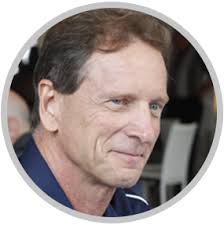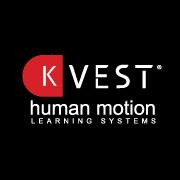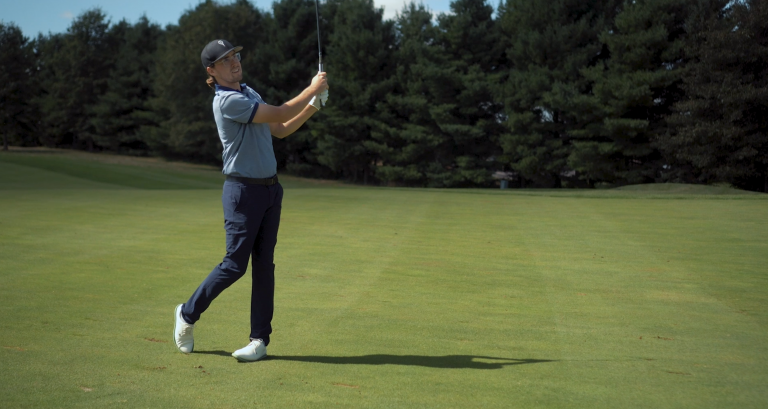In today’s episode we’re taking a look at the research around X-Factor and X-Factor Stretch done by our guest Dr Phil Cheetham. X-Factor, first popularized in the 90’s by Golf Magazine and Jim McLean, was the focus of some of Dr Cheetham’s research in kinematics. Today we learn – Is it relevant? Does it hold up under research? Listen into the episode below to find out.
X-Factor is the difference or separation between the rotation of the shoulders and pelvis.
 Typically X-Factor is referred to as the separation of shoulders and pelvis at the top of the backswing, however there is some level of X-Factor throughout the entire swing. Smaller at address than top of backswing but nonetheless measurable throughout the swing.
Typically X-Factor is referred to as the separation of shoulders and pelvis at the top of the backswing, however there is some level of X-Factor throughout the entire swing. Smaller at address than top of backswing but nonetheless measurable throughout the swing.
X-Factor in the swing creates tension with your core muscles and provides energy (power) for the downswing. However in research Dr Cheetham and team didn’t find a direct correlation with amount of X-Factor.
After contrasting the X-Factor at the top of the backswing and at its maximum early in the downswing for highly skilled and less skilled golfers, we found that the X-Factor at the top of the backswing was not significantly larger for the highly skilled players than less skilled players. [1]
What they did find though was a stretch early in the downswing (because of the pelvis rotating first in the downswing) as different between highly and less skilled golfers.
X-Factor Stretch is the increase in X-Factor when the pelvis starts the downswing before the shoulders.
For most highly skilled golfers just prior to the transition from the backswing to the downswing, the pelvis slows down and changes direction to rotate forward while the upper body continues to rotate backwards.
This head start of the pelvis moving towards the ball causes an increase in the stretch of the large and powerful rotating muscles of the trunk. Early on in the downswing, the pelvis has a higher rotational velocity than the upper body and so will “outrun” the upper body toward the ball.
Because of this initially higher velocity of the pelvis, the X-Factor increases, and in some highly skilled golfers it grew by as much as 15 degrees. [1]
When you look at this in reference to what you can see in efficient kinematic sequences it makes a lot of sense. Make sure to review that episode to get the full picture.
I don’t want the confusion between the X-factor and the X-factor stretch. They are two different things. X-factor is simply the separation. X-factor stretch is very specific to the transition phase and it’s the increase in stretch created by the pelvis turning before the shoulders into the downswing. Dr Phil Cheetham
A great resource is the paper Dr Cheetham authored on this topic. The importance of stretching the“X-Factor” in the downswing of golf: The “X-Factor Stretch”
[aesop_chapter title=”About Our Guest” bgtype=”img” full=”on” img=”http://golfsciencelab.com/wp-content/uploads/2015/10/yellowgreen.jpg” bgcolor=”#888888″ revealfx=”off”]
About Dr Phil Cheetham
 Dr. Phil Cheetham is currently the senior sport technologist and biomechanist for the United States Olympic Committee at the Olympic Training Center in Chula Vista, California. He currently works primarily with athletics and golf, but has also worked with many sports including gymnastics, swimming and diving. He has been a member of the US Olympic Team staff for both the London (2012) and Rio (2016) Olympic Games. In Rio several of the athletes he works directly with won gold and silver medals.
Dr. Phil Cheetham is currently the senior sport technologist and biomechanist for the United States Olympic Committee at the Olympic Training Center in Chula Vista, California. He currently works primarily with athletics and golf, but has also worked with many sports including gymnastics, swimming and diving. He has been a member of the US Olympic Team staff for both the London (2012) and Rio (2016) Olympic Games. In Rio several of the athletes he works directly with won gold and silver medals.
Phil is also two-time Olympian himself at Montreal (1976), and Moscow (1980), in gymnastics for Australia. He was also three times gymnastics all-around champion of Australia in the 1970’s.
He has been an inventor and developer of sport motion analysis systems and sensors since the early 1980’s. He has been a co-founder of several biomechanics and motion analysis companies including: Peak Performance Technologies, Skill Technologies, Advanced Motion Measurement, and Skilled Motion Concepts. He is considered a pioneer in the motion analysis industry and his biomechanics methods have become a de-facto standard in 3D golf swing analysis.
He is a board member for the World Scientific Congress of Golf and the Titleist Performance Institute. In golf his research publications include; “The X-Factor Stretch”, “The Kinematic Sequence” and a PhD dissertation on “Club Handle Twist Velocity in the Golf Drive”.
He has an Honors Degree in Electrical Engineering from the University of New South Wales, Sydney, Australia, a Master of Science and a PhD in Exercise Science and Biomechanics from Arizona State University, Phoenix, Arizona, U.S.A.
If you want to learn more make sure to check out Dr Phil Cheetham’s FORCES AND MOTION workshop starting soon.
Links and Resources:
1 – The importance of stretching the“X-Factor” in the downswing of golf: The “X-Factor Stretch”
Forces and Motion Online Workshop (starting soon)
TPI article from Dr Cheetham “The Difference Between X-Factor And X-Factor Stretch”
TPI article – “X-Factor Essentials: What It Is And How To Train It”
Dr Rob Neal info on X-Factor – “X-Factor Ranges of PGA Tour Players”
Dr Rob Neal related info on X-Factor Stretch “Rate of Recoil in the Golf Swing”
This Episode’s Sponsor
 K-VEST is the industry’s only human motion learning system. The all-in-one wireless system that instantaneously measures players’ power signatures and 3D data. The system that assesses player characteristics and generates insightful reports. The system that automatically flows those reports into a powerful coaching and training program builder.
K-VEST is the industry’s only human motion learning system. The all-in-one wireless system that instantaneously measures players’ power signatures and 3D data. The system that assesses player characteristics and generates insightful reports. The system that automatically flows those reports into a powerful coaching and training program builder.
But that’s just the beginning. K-VEST doesn’t only provide you with an extensive library of pre-built training programs and drills, but also with the tools to customize them. And these pre-loaded resources always put real-time auditory and visual feedback front and center—making it possible for clients to feel new movement patterns. Supporting this state-of-the-art wearable technology are turnkey marketing programs that empower professionals to grow their businesses. In fact, it’s everything today’s pro needs to achieve greater success… a human motion learning system.
Watch a video with Martin Hall as he uses K-VEST biofeedback to illustrate side bend at address
Music Included in this episode:
Under Suspicion by Lee Rosevere
In a Moment by Lee Rosevere




